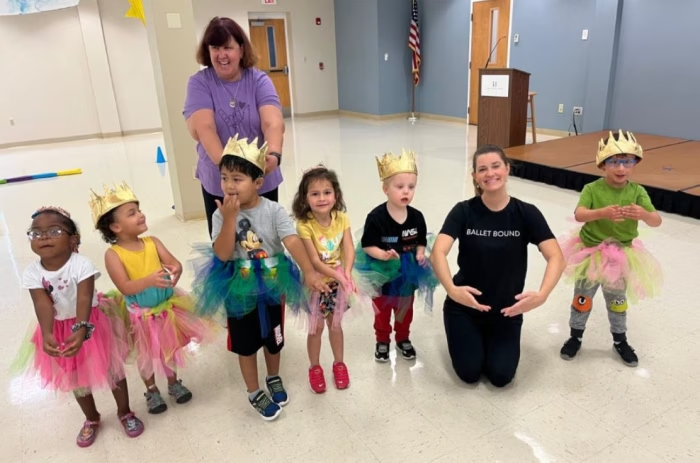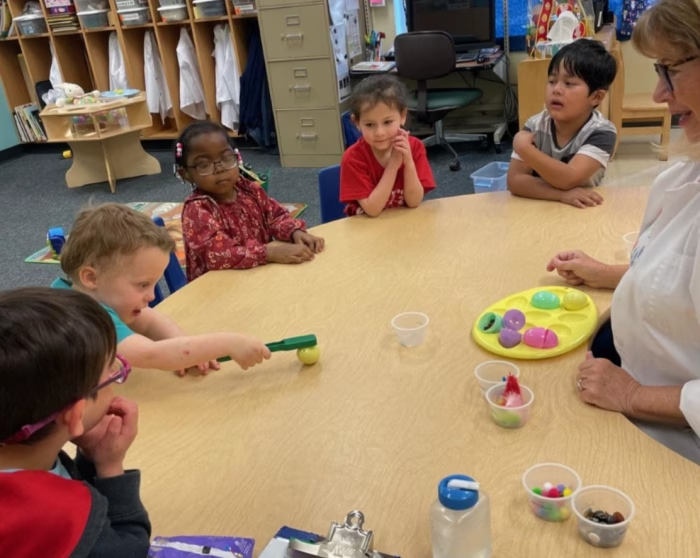In addition to classroom curriculums, Heuser Hearing & Language Academy (HHLA) offers Music and Art three times a week and Science Technology Reading Engineering Art and Math (STREAM) twice a week. Curriculum for the music, art and STREAM classes is inherently flexible to accommodate learner capabilities while meeting Kentucky Academic Standards for Arts and Humanities.
Once a week, the Louisville Ballet offers movement and kinesthetic learning based on the National Core Arts Standards in Dance, which is therapeutic for children’s vestibular systems.
On multiple occasions throughout the school year, the Louisville Orchestra provides educational outreach, allowing learners to engage hands-on with instruments and musical sounds.
Music
Board-certified music therapist Greta E Gillmeister (MT-BC) provides music therapy sessions to every child three times a week. Music therapy at HHLA goes far beyond rhythm and melody. It is integrated into children’s educational plans to help develop skills in the following areas:
- Auditory training
- Language acquisition and development
- Speech perception and production
- Gross and fine motor skills
- Social interaction skills
- Self-esteem and emotional development
- Active listening skills
Music supports all children at HHLA by building focus, language, rhythm, turn-taking and communication through engaging multisensory activities. Ms. Greta works closely with teachers to align music goals with each child’s IEP or classroom goals.
Children in all programs spend time together during this time of day to create an inclusive learning experience for all.

Art
Art at HHLA blends creative expression with therapeutic speech and language goals. It provides a nonverbal avenue for children, especially those with expressive language delays and social-emotional needs. Art allows all children to communicate and process their experiences through sensory and tactile means.
Our general education peers benefit by developing visual literacy, creative problem solving and emotional intelligence.
This is another time of day where our programs blend to create an inclusive learning environment.

Ballet
In partnership with the Louisville Ballet, HHLA offers a specialized movement and dance program that promotes balance, coordination, self-regulation and expressive movement. This is especially vital for DHH children, who may experience vestibular challenges that impact their sense of balance and body-space awareness.
Dance and creative movement benefit all students by promoting physical fitness, imagination, collaborative play and communication without words. These sessions encourage body-mind awareness, build confidence and offer inclusive fun.
This once-a-week experience includes all programs to continue our inclusive learning environment.

STREAM
Every child at HHLA participates in our custom-designed STREAM program. Through daily center-based activities and dedicated lab time, children engage in hands-on experiments and exploratory play that help them better understand the world around them.
Our programs come together twice a week for this time of the week.

Call Heuser Hearing Institute at (502) 584-3573 for more information or to schedule an appointment.